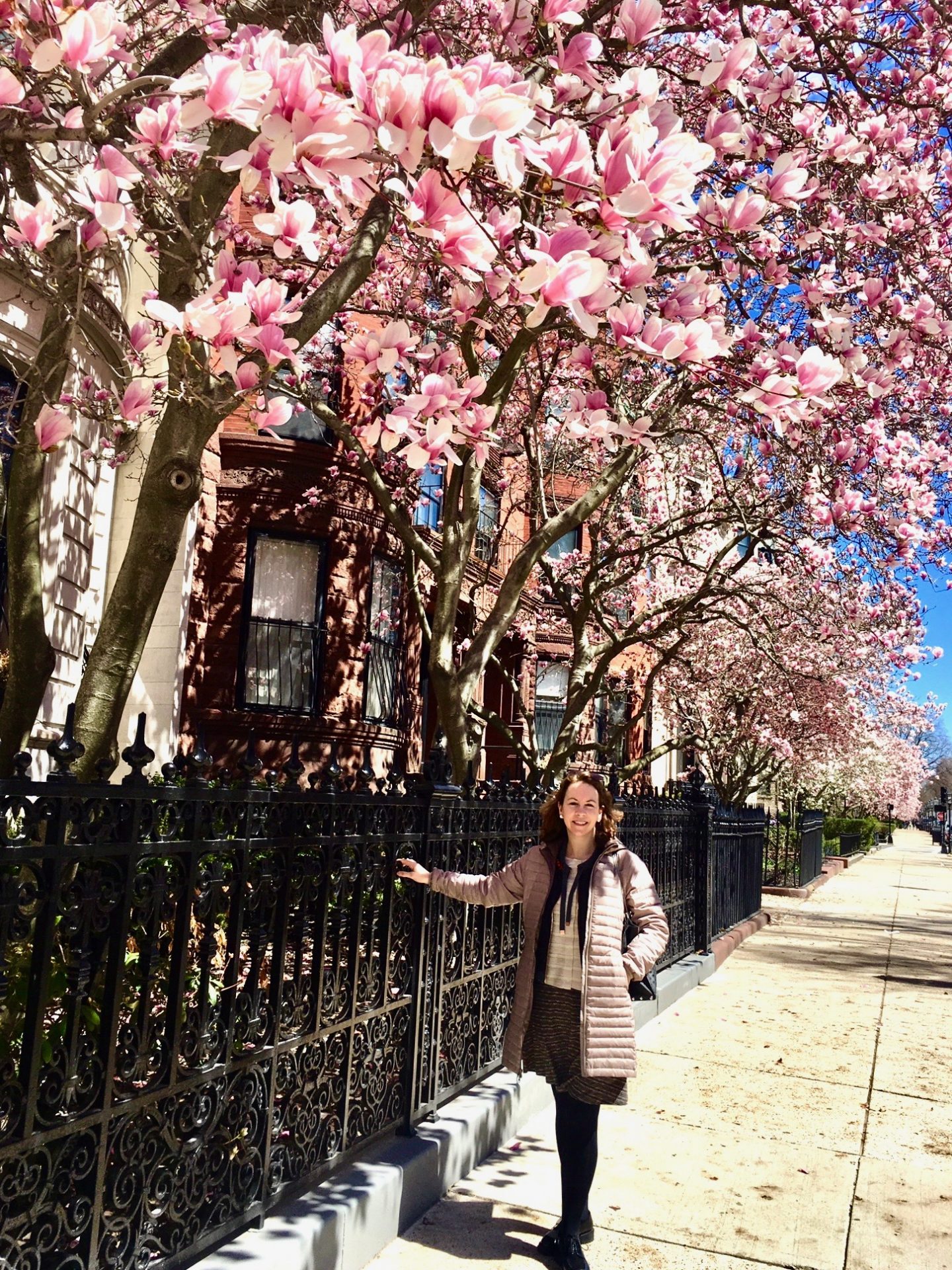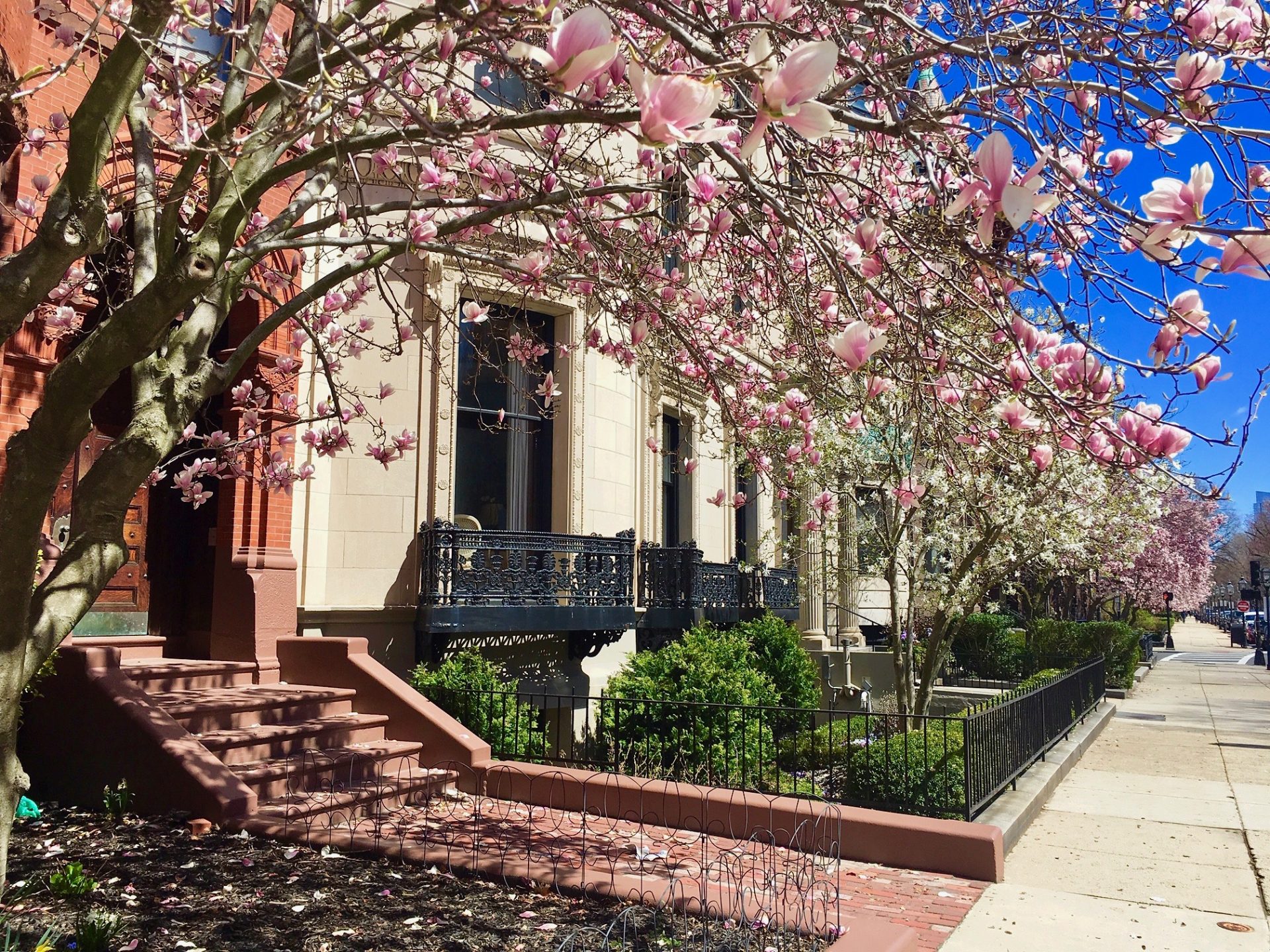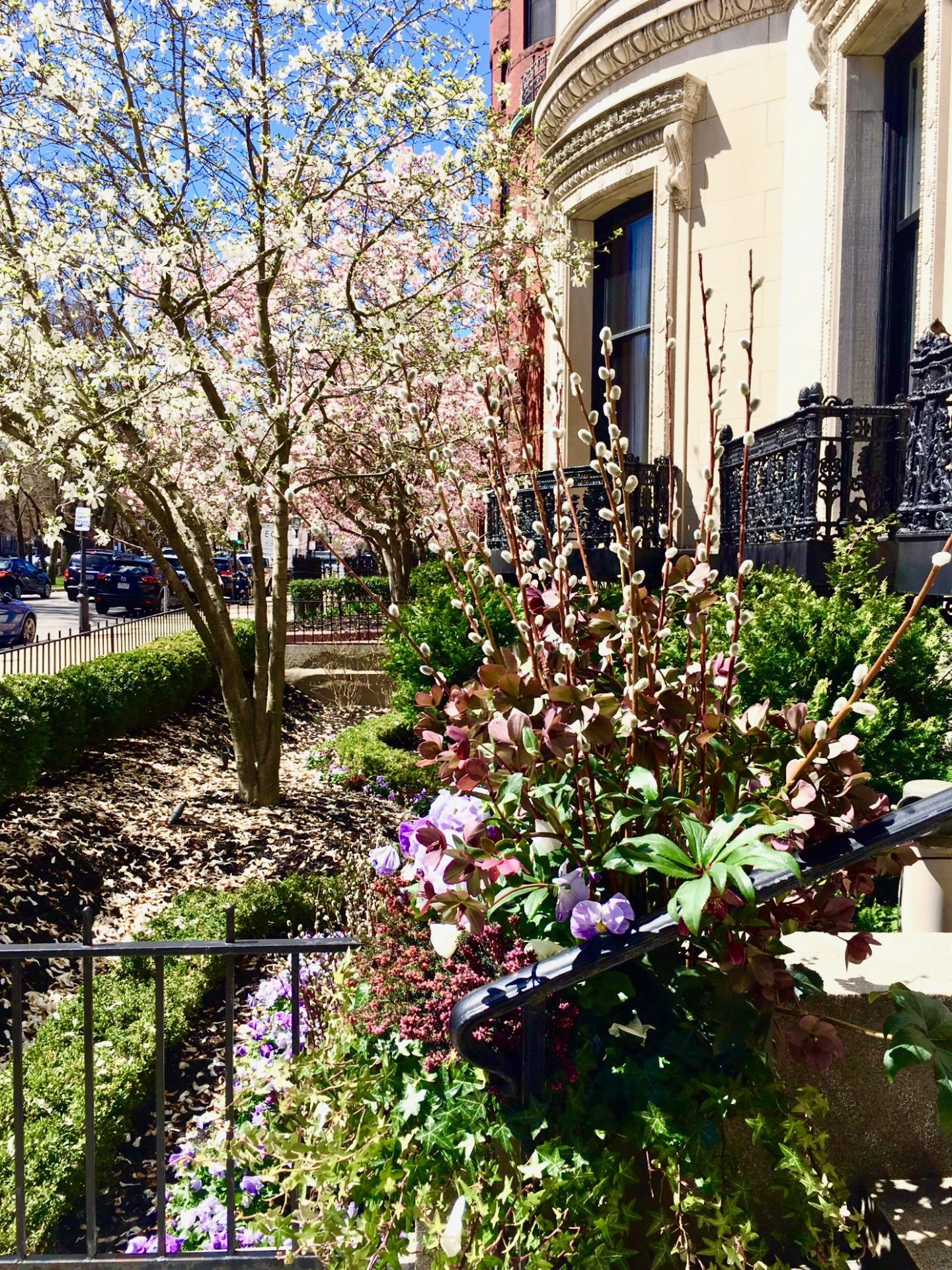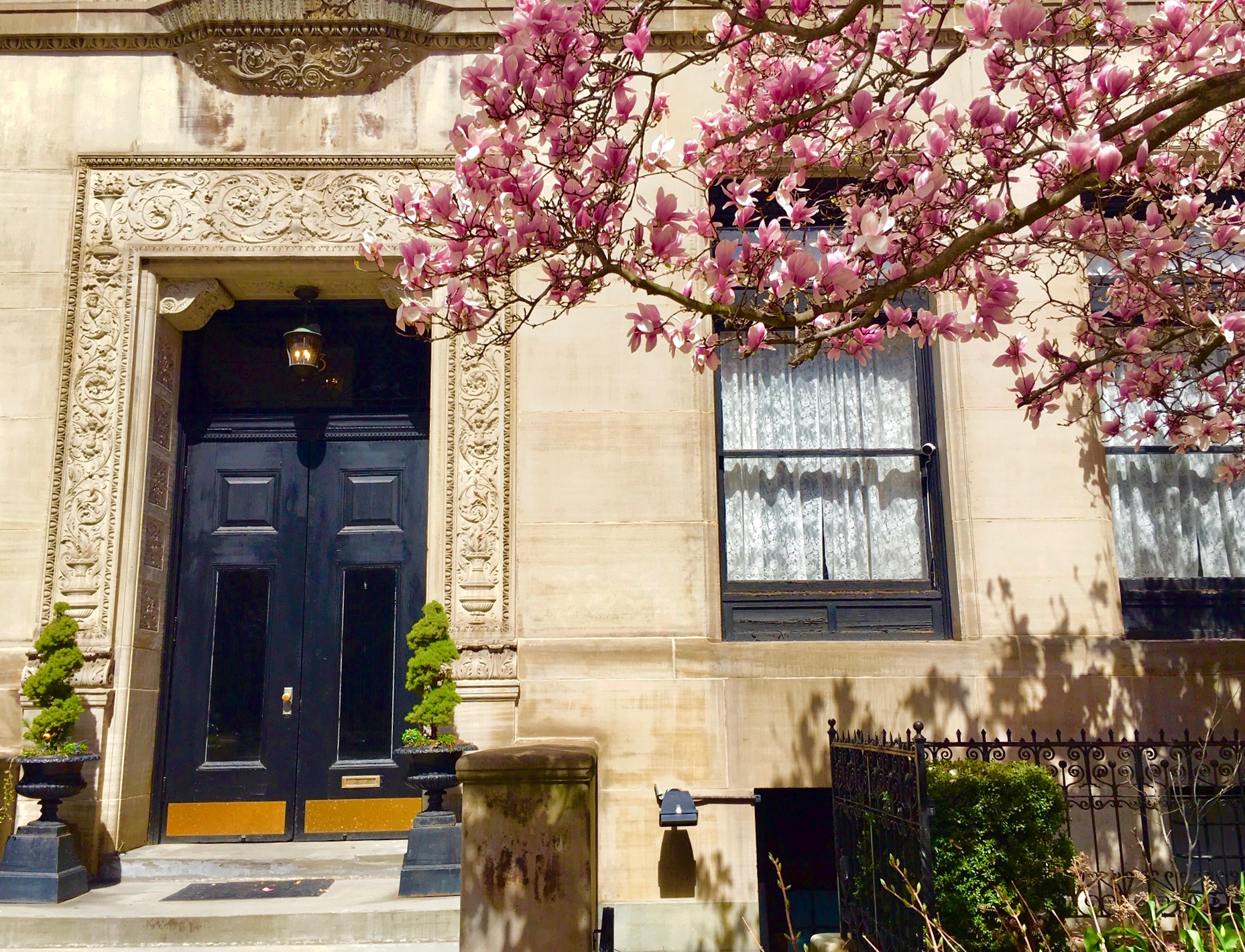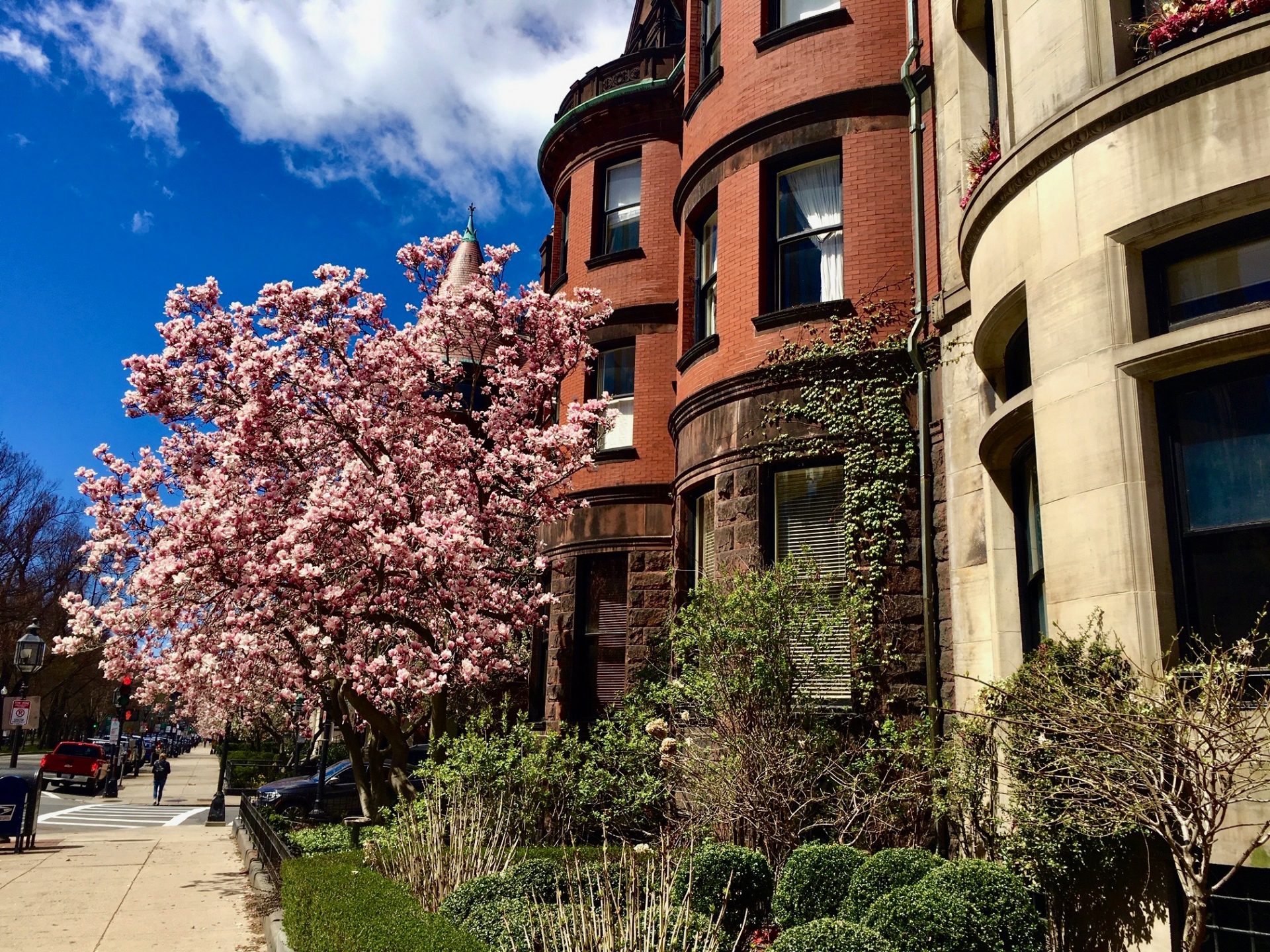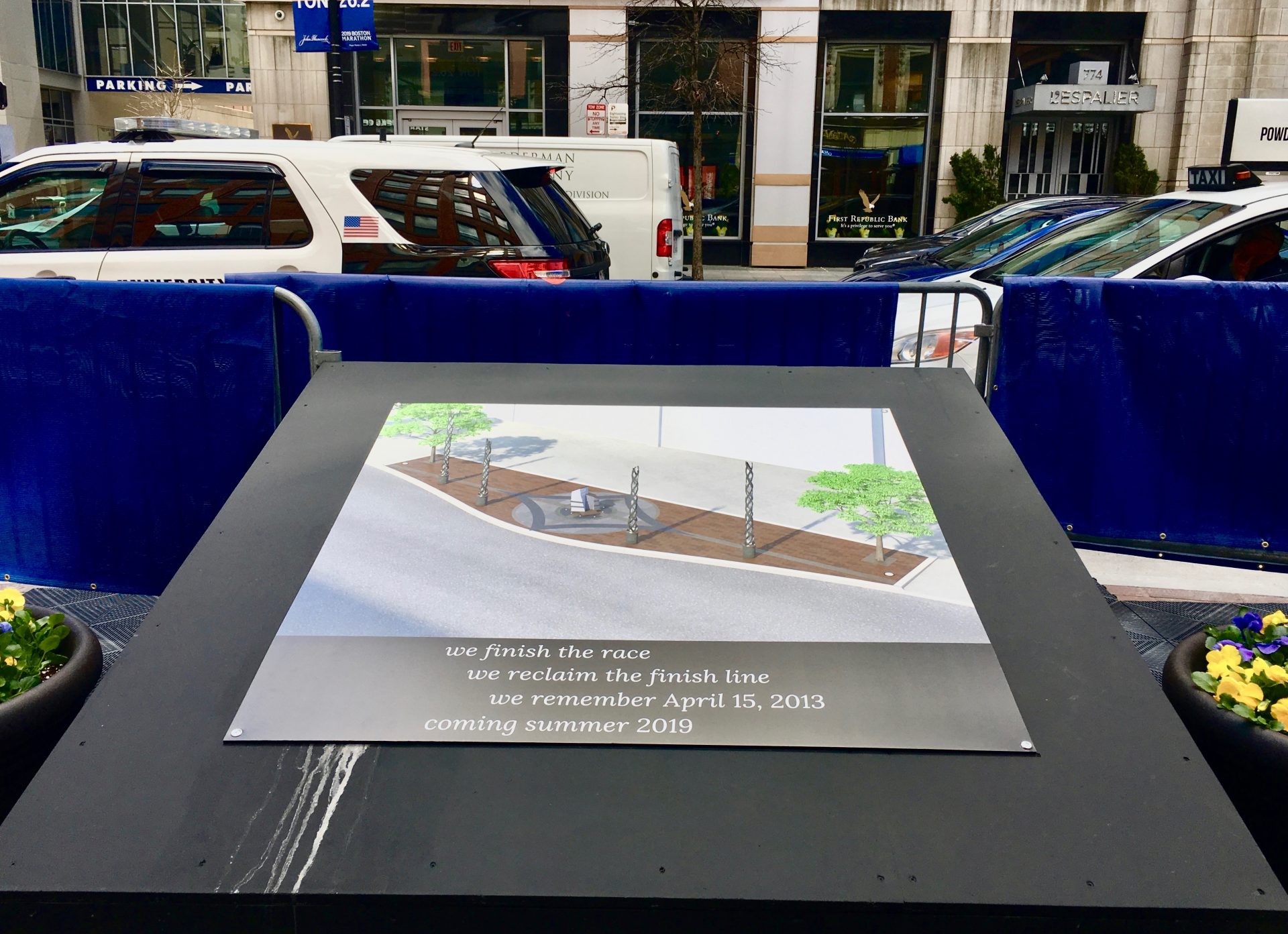Beyond Wellesley: the magnolias are in full bloom in Boston’s Back Bay neighborhood
Boston is in the very grip of spring, and there’s no better way to enjoy the beauty right now than a stroll down Commonwealth Avenue in the Back Bay. There, on the sunny side of a street known for its style and grace, well over 100 magnolia trees are demanding your complete attention. A friend who knows all the best spots in Boston took me in as a gift for our shared birthday (cute, I know). We meter-parked on Hereford St., right in front of the historic Massachusetts Institute of Technology (MIT) Chi Phi fraternity house. Lore has it that when in the early 1960s Back Bay neighborhood organizer Laura Dwight made real her dream of lining the sunny side of Comm Ave. with magnolias, she enlisted the help of the Chi Phi men to plant the trees.
Dwight was a visionary, someone who reasoned that a neighborhood that looked untended would slide into further disorder. Today that way of thinking is known as the Broken Windows Theory, the idea that a simple broken window left unfixed (or general signs of disarray such as litter, spray-painting, and other visible examples that suggest residents don’t care) leads to increased decay. The logic suggests that by nipping small annoyances in the bud, larger headaches such as crime and further decay can be avoided. Make the neighborhood appear as if law and order rule the day, and law and order shall rule the day.
Dwight wasn’t interested in theory, though. Her magnolias idea came from a place of action and good common sense. Today, that common sense looks something more like sheer genius. Join me for a stroll down Comm Ave. and admire the Back Bay magnolia trees in full bloom.
